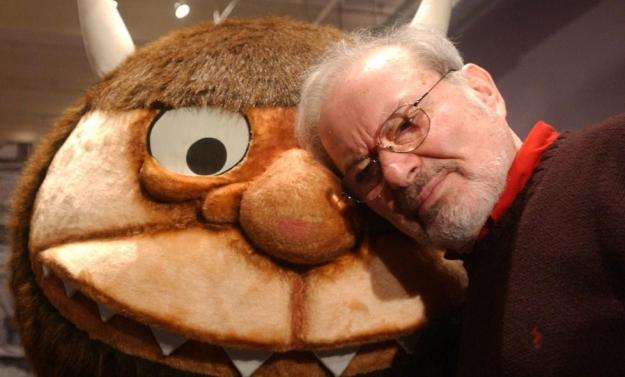
Sad news for anyone who was a child at any time over the last half-century: Maurice Sendak, the man behind Where The Wild Things Are, In The Night Kitchen, and a dozen other whimsical yet surprisingly mature children’s books has passed away. According to the New York Times obituary, Sendak passed due to complications from a recent stroke.
Though it’s difficult to sum up why the man’s death is such a loss to the world, it should be said that his insistence that children’s books need not candy-coat reality for kids, or talk down to them just because they happen to be young, forever altered the genre. Where The Wild Things Are is superficially a story about a disobedient kid inventing monsters to play with, but it’s also a tale of childhood innocence, the power of imagination to see one through tough times, and the eventual need to return to reality. Not many kid’s books could be adapted into a Spike Jonze movie soundtracked by Karen O, and yet because Sendak’s work is so timeless (and more importantly, true), his themes resonate just as well in the hipper-than-thou film adaptation as they do on the printed page.
Though Where The Wild Things Are is his most famous work, we absolutely must mention In The Night Kitchen, if for no other reason than its frankly silly censorship issues over the years. Many states here in the US and countries abroad came down hard on the book for its brief depiction of a naked child frolicking through an ethereal dream land. Not that it was lewd or intended as anything other than “this boy just got out of bed and fell into a bizarre Little Nemo-esque fantasy,” but people were just appalled at the idea that a child might ever lose his pajamas. We mention this because Sendak, through it all, refused to alter the story. It was a “realistic,” innocent depiction of this child’s dream, and Sendak never lost faith that his audience would be able to see and appreciate that, despite the handwringing of government censors.
Regardless of what we write here, the greatest testament to Sendak’s storytelling ability is that his tales are still being read to children. It’s been nearly a half-century since Where The Wild Things Are hit bookstore shelves, yet we all read it as kids and will likely read it to any kids we produce in the future. It’s become an ingrained, necessary part of childhood, right alongside getting chicken pox and having swordfights with sticks in the backyard.
Maurice Sendak is gone, but we can’t see his legacy fading any time soon.


